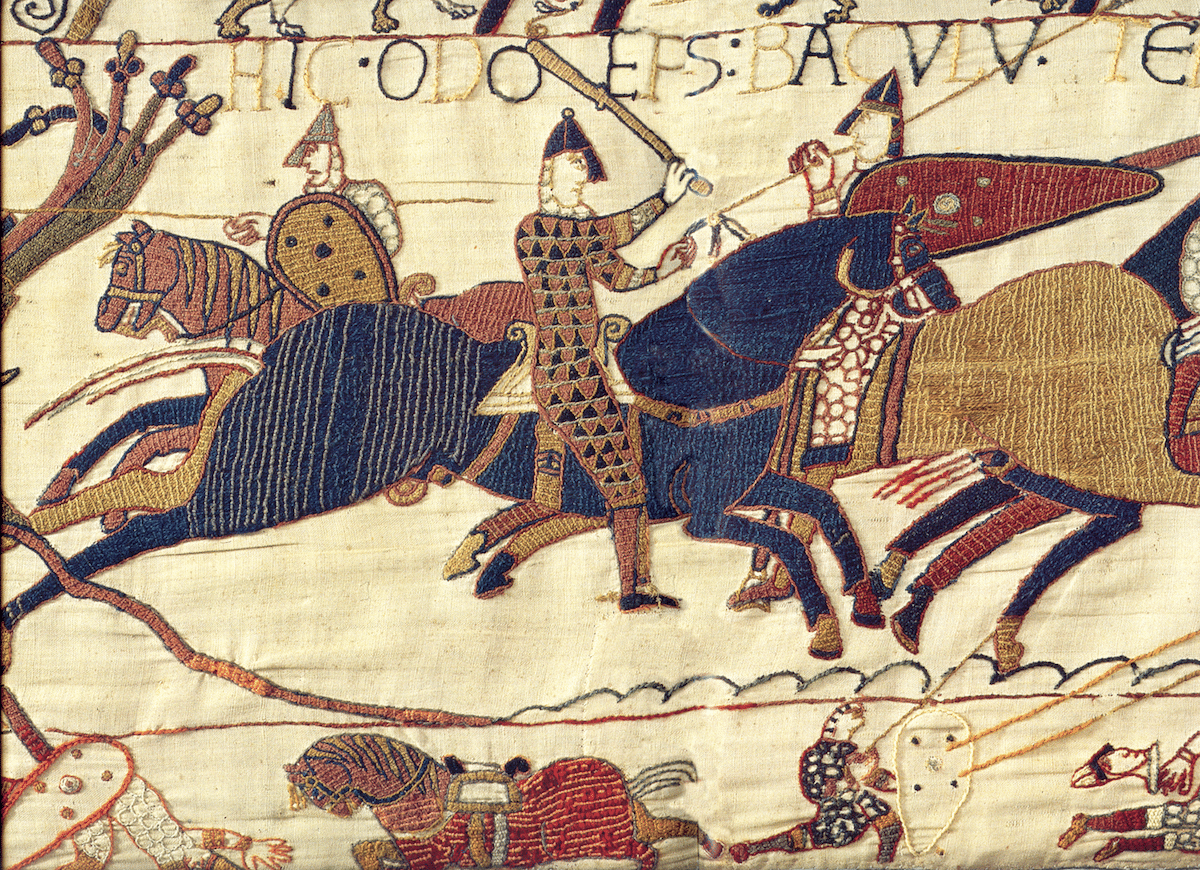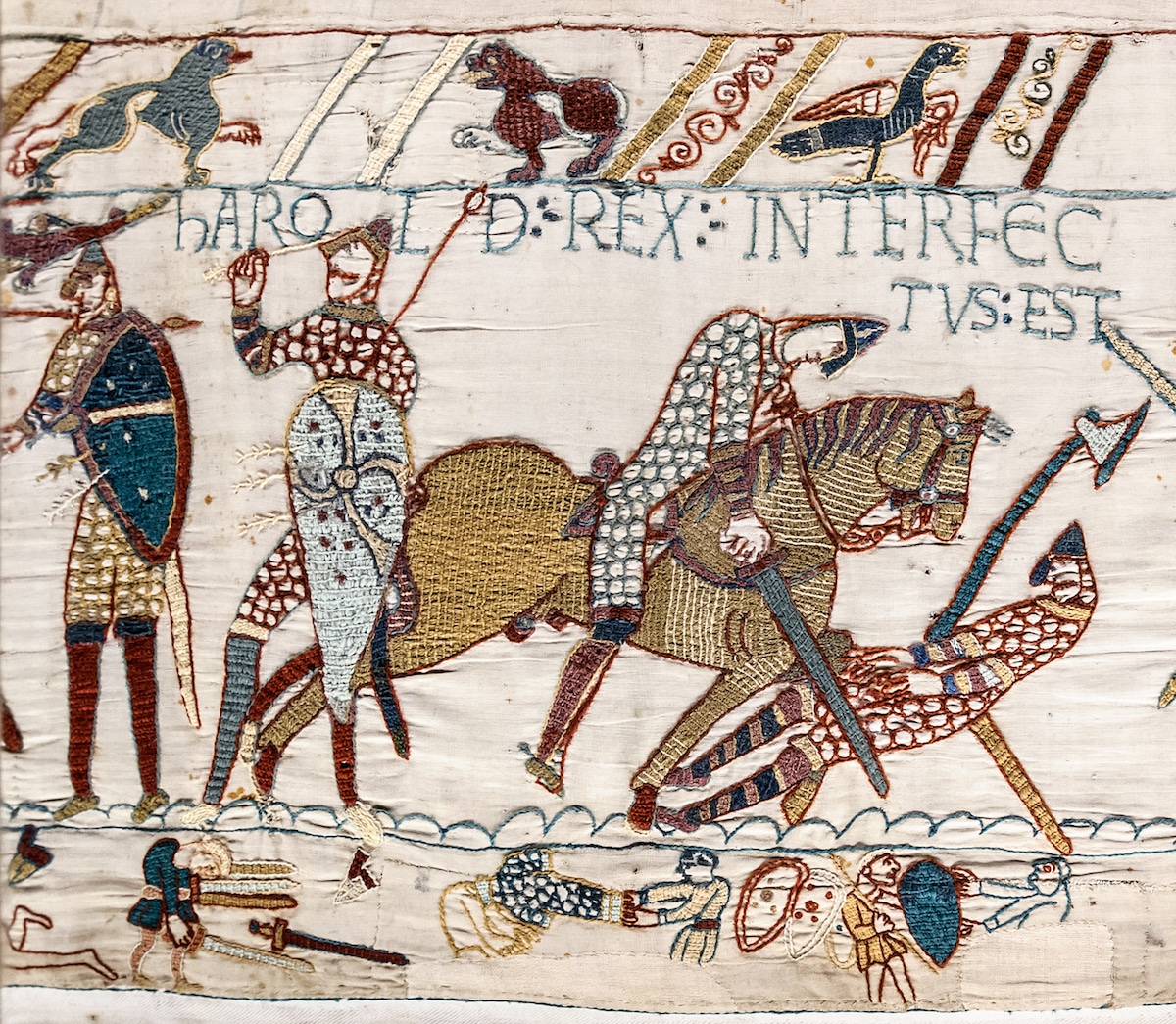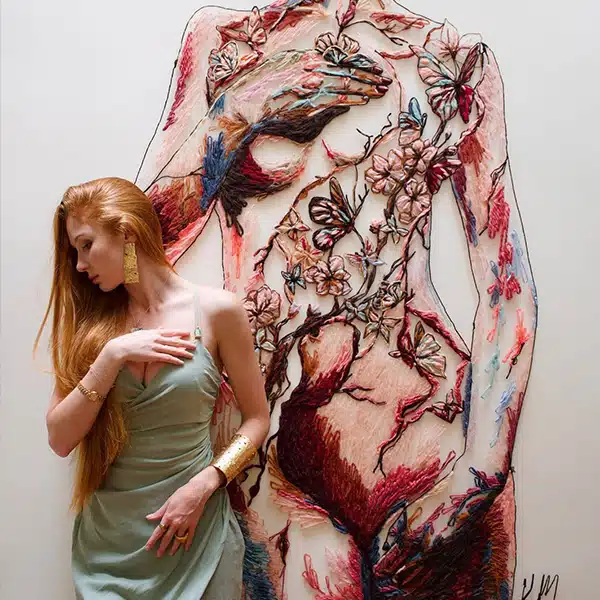
Odo, half-brother of William, Duke of Normandy, cheering his troops on (detail).
There are many ways to tell a story, even one that’s as epic as a battle to rule the English throne. The Bayeux Tapestry illustrates a grand tale that brings together the Norman conquest of England that ended with the Battle of Hastings in 1066. The retelling is not brief; the impressive embroidery measures 20 inches high and nearly 230 feet in length on woven linen, and it consists of 75 scenes complete with Medieval Latin inscriptions (also called tituli) that narrate the events pictured.
It’s important to note that “tapestry” is a misnomer for this piece. A tapestry, traditionally, is a textile fabric where the designs have been woven into the cloth. There is no weaving done on the Bayeux Tapestry—everything is embroidered using the crewel technique.
Who created the Bayeux Tapestry?
We can’t confirm the exact origins and creators of the Bayeux Tapestry, but historians today have a good idea of where it came from and who did all of the stitching.
The embroidery was probably made in Canterbury, England around the year 1070. Its patron was likely Odo, the Bishop of Bayeux who was the half-brother of William, Duke of Normandy (who ultimately ruled the throne). One reason for this attribution was because the scenes depict the Normans in a favorable light, and another was that Odo himself appears in the embroidery several times despite the fact that he plays a minor role in the textual sources. When Odo built the Bayeux Cathedral in Normandy in 1077, the tapestry was hung there.
There was a team of embroidery artists who worked on the Bayeux Tapestry whose needlework style is similar to Anglo-Saxon embroiderers. This is theorized because of the style of the scenes and drawing techniques which appear to be adapted from illuminated manuscripts in Canterbury.

The Death of King Harold at the Battle of Hastings (detail).
What story does the Bayeux Tapestry tell?
There’s a lot going on throughout the Bayeux Tapestry. The entire composition can be divided into three horizontal sections; the middle section is the largest and contains the main events of the story, while the top and bottom scenes feature pictures of animals (including 220 birds and 41 griffins) and people that sometimes interact with the larger narrative.
Over the course of 75 episodes, the continuous narrative illustrates the events leading up to the Battle of Hastings and the assault itself. Elements of it, including the symbolic meanings of some figures, are still debated today.
Beginning
The Bayeux Tapestry begins with an order. King Edward the Confessor sends Harold Godwinson, the Earl of Wessex and brother-in-law of Edward, to Normandy. (It’s unclear as to why, but some think it was to pledge loyalty to William, the Duke of Normandy.) Harold leaves for the journey, but he arrives at the wrong place and is taken prisoner by Guy, Count of Ponthieu. After an exchange of messages, Harold is released to William who invites him to accompany him on a campaign against Conan II, Duke of Brittany. During their journey, the army becomes stuck in quicksand and Harold ends up saving two Norman soldiers.
Middle
Harold leaves for home and meets again with the Edward, and the two are arguing with one another. It’s said that Harold's pose, seen in scene 25, is in “disgrace.” The tapestry then fast-forwards a year to Edward appearing ill and on his deathbed and bequeathing the crown to Harold. A probable coronation ceremony happens in scene 31.
After Harold is crowned king, there is an illusion to an upcoming battle with Halley’s Comet and a fleet of ghost-like ships.
End
The Battle of Hastings is the culmination of the Bayeux Tapestry. The English army is on foot while the Normans are on horses. Both sides are depicted as having bravely fought, but ultimately the English troops, including now-King Harold, are killed. The final scene features English troops retreating the battlefield. Although that is the end of the tapestry as we know it, it’s believed that the tale contained one additional scene.
See the full text and break it down scene by scene here.
Check out the Bayeux Tapestry in its entirety:
























Next page: Where does the Bayeux Tapestry hang today?






















































































